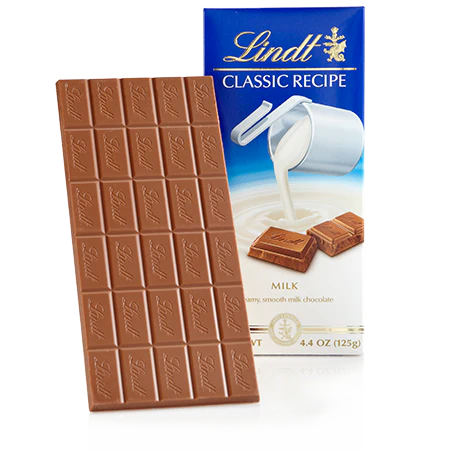Chocolate Ideology

The CASE FILE series — to which SEMIOVOX has invited our semiotician colleagues from around the world to contribute — shares stories of things we were amazed and amused to learn, whether or not they proved useful to the client.
I was once hired to help a client make sense of the visual systems within the Chocolate category. What messages — purposeful or accidental — are communicated by chocolate packaging, and by chocolate’s various forms? It was a semiotician’s version of a visit to Willy Wonka’s factory. I’ll never forget my retail expeditions — the chocolate shops, the supermarket aisles — which brought sweetness and color to what was a cold, gray winter in São Paulo.
It was a complex project, in which my own role was a minor one. But it was richly rewarding. I was granted methodological license, which meant that I was free to bring something unique and special to the client. During that project, all of my senses were fully engaged; and I thought about chocolate all day long.
I’m proud of my analysis, and it was well-received. However… it wasn’t through my own efforts that I learned something truly extraordinary, a lesson in comparative religion and culture. I have not experienced chocolate the same way since!
One chilly evening, while sitting at my desk overlooking the São Paulo skyline, I decided to do some deep background research… by studying up on the history of chocolate. I tuned into Radio France’s France Culture podcast, in order to listen to chocolate specialists from Belgium and Switzerland — both countries are among the world’s leading producers and exporters of chocolate — discuss how chocolate has evolved over time and around the world, from its origins in Meso-American cultures to its current status as a globally appreciated delicacy.
At one point in the discussion, it was explained that the extra-smooth and creamy milk chocolate bar was originally developed in 19th-century Geneva — in those days known as “the Protestant Rome” — to encourage children to consume a bitter nutriment that was considered healthy, almost medicinal. The Swiss chocolate bar’s now-familiar form factor — rectangular, divided into cells of equal size — was developed for use in Sunday schools. The format conveyed a message about making a single unit of chocolate shareable with many. The marks on a chocolate bar are an index of sharing — and a reminder of the story of Jesus feeding the multitude with five loaves of bread and two fishes.
Catholic Belgium, meanwhile, is best known for its refined cocoa powder… and for pralines, which is to say: filled chocolates. These were originally developed in 19th-century Brussels by a pharmacist who covered medicines in chocolate. As with Swiss chocolate bar, we find here a link between a specific cultural worldview and the evolution of chocolate’s form. The praline can be thought of as a reminder that it’s OK to sin a little, to make mistakes, as we navigate life.
These stories made me ecstatic. I was so eager to share them with the colleagues with whom I was collaborating on the chocolate project. They weren’t excited… because it wasn’t apparent what use this intel was to the project. In fact, to this day I can’t get anyone as excited as I am about the meaning of Swiss and Belgian chocolate forms. My own perspective, however, was transformed. I will never cease to be amazed by the deep layers of meaning and historical experience that we can discover in the things that we eat.
CASE FILE: Sónia Marques (Portugal) on BIRTHDAY CAKE | Malcolm Evans (Wales) on PET FOOD | Charles Leech (Canada) on HAGIOGRAPHY | Becks Collins (England) on LUXURY WATER | Alfredo Troncoso (Mexico) on LESS IS MORE | Stefania Gogna (Italy) on POST-ANGEL | Mariane Cara (Brazil) on MOTHER-PACKS | Whitney Dunlap-Fowler (USA) on WHERE THE BOYS ARE | Antje Weißenborn (Germany) on KITSCH | Chirag Mediratta (India) on “I WATCH, THEREFORE I AM” | Eugene Gorny (Thailand) on UNDEAD LUXURY | Adelina Vaca (Mexico) on CUBAN WAYS OF SEEING | Lucia Laurent-Neva (England) on DOLPHIN SQUARE | William Liu (China) on SCENT FANTASY | Clio Meurer (Brazil) on CHOCOLATE IDEOLOGY | Samuel Grange (France) on SWAZILAND CONDOMS | Serdar Paktin (Turkey/England) on KÜTUR KÜTUR | Ximena Tobi (Argentina) on SLUM PANDEMIC | Maciej Biedziński (Poland) on YOUTH LEISURE | Josh Glenn (USA) on THE AMERICAN SPIRIT | Martha Arango (Sweden) on M | Chris Arning (England) on X | Peter Glassen (Sweden) on WHEN SHABBY ISN’T CHIC | Joël Lim Du Bois (Malaysia) on RECONSTRUCTION SET | Ramona Lyons (USA) on THE FALL.
Also see these global semio series: MAKING SENSE (Q&As) | SEMIOFEST SESSIONS (monthly mini-conferences) | COVID CODES | SEMIO OBJECTS | COLOR CODEX | DECODER (fictional semioticians) | CASE FILE | PHOTO OP | MEDIA DIET | TATTOO YOU (semioticians’ tattoos).

